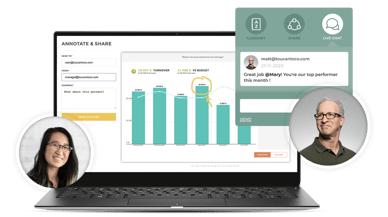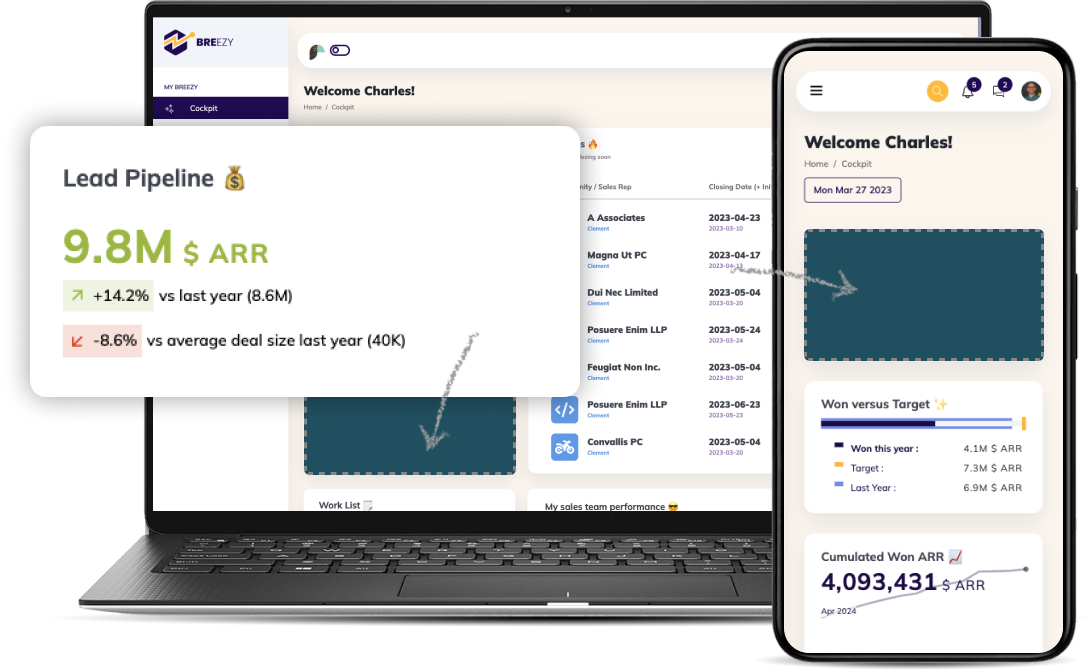
Why should you measure user and product adoption?
You can’t consistently improve what you can’t measure.
A few lucky guesses can surely give you a revenue increase, and you can correlate that with improved user and product adoption, but you can’t keep it up for long. To iterate and improve your user experience and mark your progress during this process, you need to measure where you are and set goals for the future.
You need to be able to track your progress, set goals, and understand the effects of any change to be able to consistently and gradually improve your product or user adoption.
Why improve adoption?
User and product adoption play a huge role in a business’s success.
Smallest improvements to these parts of your company will certainly have significant effects on any other business metric. Users will be more engaged, they will be utilizing your products, services, and features to a further extent, and they’ll be more open to upsells and expansions.
If you can get the users to accept your products and features to their lives quicker and more, you’ll get one step closer to achieving overall success with your company.
User and Product Adoption Metrics
So, how do you measure product and user adoption?
There are various direct and indirect metrics and KPIs that can tell you a lot about your adoption levels. I’ve included all of these metrics that could help you understand how you’re changing your user and product adoption, also how these changes are affecting different parts of your business.

Let’s go from the most direct to indirect metrics and KPIs:
1- Product adoption rate
Formula: (New Engaged Users / Total Signups) * 100
This metric determines the popularity of your product among new signups. By calculating your product adoption rate, you can directly see how many of your new signups have adopted your product and are actively using it.
2- Adoption rate
Formula: (Number of New Users of a Feature / Total Number of Users) * 100
This can be utilized to calculate the adoption of a new feature. You simply are calculating how many of your existing users are utilizing a specific feature.
You can and should calculate adoption rate for a specific time period.
3- Time-to-first key action
This metric helps you define how fast users are adopting your product, or if you’re looking at it from another perspective, how much time they’re spending without adopting your product.
The attention span of an average user is low, so if you’re spending extra time not getting them to key actions, you’re wasting valuable time.
A key action could be their Aha moment, product implementation, or purchase.
4- Percentage of users who performed the key action for the first time

This one is a more specific version of the metric #1, and can enable you with more actionable insights.
You simply calculate the percentage of users who performed the key action for the first time to the total number of new signups. Again, the key action might vary and you can see how many of your users you are succeeding in getting to that exact point.
5- Number of Daily/Monthly Active Users
This is more of a general metric that lets you understand the number of active users you have for a time period.
This can help you determine how many users that adopted your product you have at the moment. Most businesses use DAU or MAU to roughly determine their product adoption, but this metric could be improved.
6- Percentage of Daily/Monthly Active Users
Formula: (Daily/Monthly Active Users / Total Number of Users) * 100
This is a better utilization of DAU and MAU since it tells you what percentage of your existing users have actually adopted your product and are engaging with it during a period of time.
You can use this metric to improve your adoption and user engagement levels.
7- Average Usage Frequency
This is one of the metrics that can help you better understand the adoption of your product on a more detailed level.
Instead of seeing whether customers were active even for a second during a period of time, you can and should calculate how frequently an average user uses your product or feature.
8- Average time spent using the product/feature
Another metric that focuses on the use case is the average time a user spends interacting with your product or feature.
Also referred to as breadth of use, this metric can help you understand how much users are utilizing your product and what different adoption levels can look like.
9- NPS
NPS is one of the indirect metrics that you can use to track your product adoption, but it is a must-track.
Not only does NPS help you see what percentage of your customers have adopted your product so that they would recommend it to others, it lets you measure the satisfaction of these customers with your product and gives you the opportunity to engage with users that have different scores.
10- Retention
A general metric that you can track to understand your product adoption on an overall basis is the retention rate.
Especially important for businesses that are established on subscription models such as SaaS, retention determines whether your customers are using your product month over month.
11- Customer Lifetime Value
Formula: Customer Value * Average Customer Lifespan
CLTV can be a great metric to determine the value a customer brings to your company, and also be used as a comparison point with direct adoption metrics to see how much working on your product adoption can change for you.
12- Cost-per-Acquisition
Cost-per-Acquisition simply focuses on how much you’re spending to get a single user to buy your product or service. It’s especially helpful to see how your product adoption can affect or improve your sales and marketing efforts and how you should manage your budget between marketing and product/UX design.
Conclusion
Your product adoption will not spike in one night, but it will definitely improve in the long term if you’re tracking the right metrics and trying out different elements for your customer onboarding.
Toucan is a customer-facing analytics platform that empowers companies to drive engagement with data storytelling. Ranked the #1 easiest to use analytics solution on G2 Crowd, their no-code, cloud-based platform cuts custom development costs with a quick and easy implementation, even for non-technical builders. To find out what our users say, read their reviews on G2 Crowd.
Written by: Selman Gokce, an Inbound Marketing Specialist at UserGuiding. UserGuiding is a code-free product walkthrough software that 2000+ companies trust in their user onboarding.






